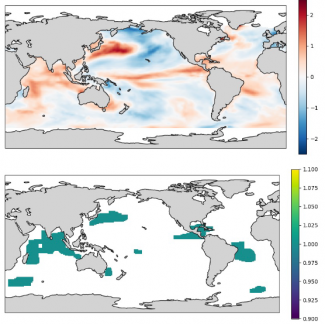The DTC community mourns the passing of Tara Jensen this past September. Tara joined the DTC in December of 2008, eleven months after the initial release of the Model Evaluation Tools (MET), a verification software package developed and supported by the DTC. Over the next six years, Tara contributed to a variety of DTC projects, ranging from collaborations with two other NOAA Testbeds (i.e., the Hydrometeorology and Hazardous Weather Testbeds) to internal projects focused on mesoscale and ensemble model evaluations. Central to all of these activities was the application of MET and demonstration of the utility of its advanced verification methods, including the Method for Object-based Diagnostic Evaluation (MODE). From the beginning, Tara demonstrated her passion for significantly impacting the outcome of each project and developing into a verification expert.
In 2014, Tara became the lead for the DTC’s Verification Task, which was charged with the continued development and support of MET. Initial development of MET was supported by the United States Air Force (USAF), with some additional support from NSF NCAR and NOAA, but at that time MET was primarily used internally by the DTC. With encouragement from Bill Lapenta, who was the Director of the National Centers for Environmental Prediction (NCEP), Tara promoted the adoption of MET by the NOAA Environmental Modeling Center (EMC) and then more broadly within NOAA. Tara’s enthusiasm and dedication quickly led to greater visibility of MET and wider interest in this community software package. Under Tara’s leadership, MET became the statistical engine of the larger enhanced Model Evaluation Tools (METplus) system. With MET at its core, METplus also contains low-level Python-based automation scripts, Python-based analysis and plotting tools, interactive visualization software, scientifically-relevant use cases, and extensive documentation. METplus is the cornerstone of DTC testing and evaluation projects. In addition, DTC partners have adopted METplus to power their operational verification systems, including NOAA with their EMC Verification System (EVS) and within the USAF’s 557th Weather Wing.










